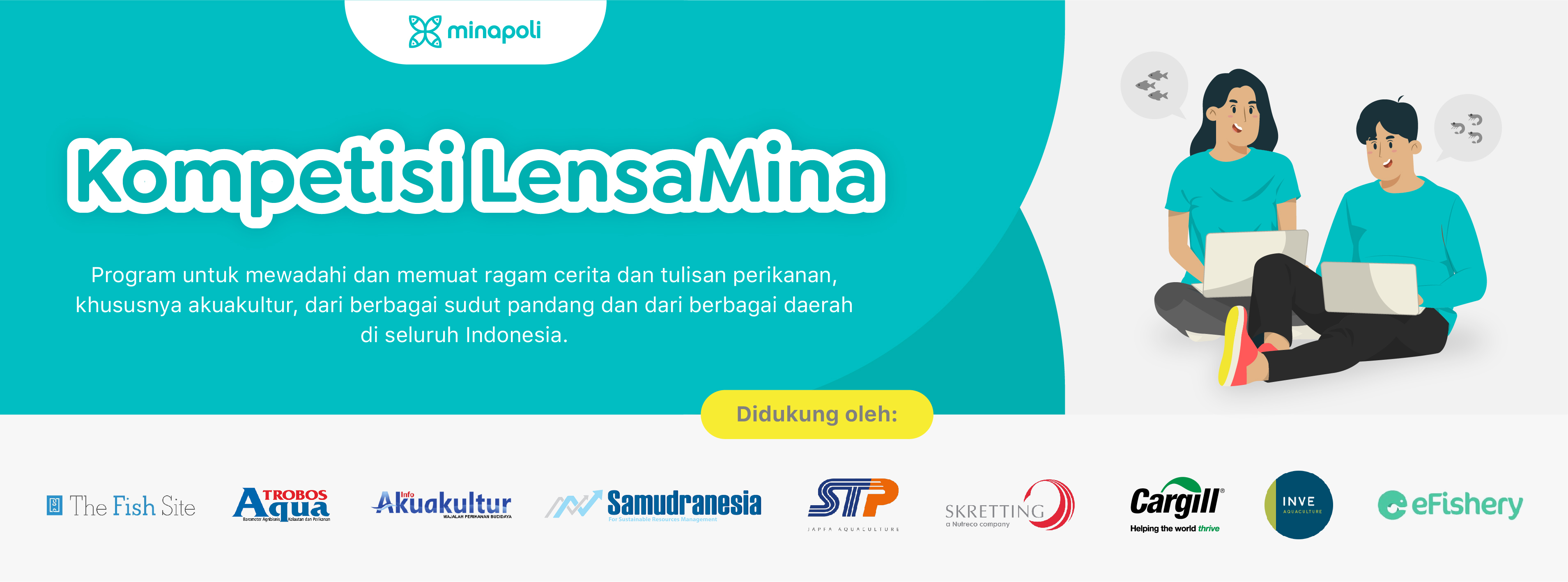
Why Sea Farming?
| Thu, 23 Sep 2021 - 10:41
The Government of the Republic of Indonesia through the Ministry of Marine Affairs and Fisheries (MMAF/KKP) has established three main breakthrough Programs for the Improvement of the Marine Fisheries Sector, one of the programs is the development of marine aquaculture to increase exports whilst it needs to be supported by marine and fishery research (Pusriskan, 2021). This short essay will review the important role of sea farming and their implications in increasing fishery production, the pros and cons, and then lead to conclusion for its application in Indonesia.
Over the past decade, yields from marine fishing have fallen dramatically concurrent with an increasing demand for marine fish due to an increasing consumption of seafood products and the fact that seafood products contain many special nutritional benefits compared to other land food products (Fig.1). As the supply of fish has declined due to human activities such as overfishing and destructive fishing techniques, sea farming can be used as an alternative when large amounts of fish are needed to meet market demand (Goldburg & Naylor 2005). However, sea farming has been criticized for the environmental impacts of its waste and on wild fish stocks, particularly through the potential spread of infectious disease (Roth, 2001).

Fig. 1. World Fish Production and and Food Use Consumption 1976-2030 (Source: The state of World Fisheries and Aquaculture, FAO report 2002)
One of the most significant environmental concerns regarding sea farming activity is that of waste production. After being accumulated, waste such as chemical substances and uneaten food that settles in the ocean floor, which can increase organic carbon and sulfides, endangering life on the ocean floor. As Cabarcas et al (2005) show, the accumulation of fish waste strongly reduces polychaetes (marine worms) and nematodes.

However, sea farming systems have been developed which are more environmentally friendly. There are many examples of such systems. In one system, fish such as tilapia can be used in order to clean the waste. This is proved by the fact that tilapia consumed organics food, including plankton, invertebrates, green leaves, larval fish, decomposing organic matter, and detritus (Clay, as cited in The Economist, 2003, p. 3). Another system uses seaweeds combined with shellfish and fin fish to absorb waste products from the sea farming installation as their source of nutrients (Chopin, 2008).
This system is known as the Integrated Multi-Trophic Aquaculture (IMTA) which has been applied at some parts of the world, particularly in China. It has also been demonstrated that seaweed and mollusk can be well developed in polluted waters and can reduce dissolved nitrogen and increased phosphorus waste from salmon cages (Naylor et al, 2000). These systems are not only environmentally friendly, but they also provide economic gains. Waste generated from sea farming operation can create additional revenue from the sale of seaweed, carp fish and mollusk, thus making this system more profitable and environmentally friendly than the regular system.
Yuk, ikuti juga: Kompetisi LensaMina, Membuka Cakrawala Akuakultur Indonesia
Moreover, it has been claimed that the regular supply of fish seed from wild fish natural habitat is essential for the continuity of sea farming operation. Sea farming might stop operating if there is lack of supply of marine fish seed, brood stock or juveniles. According to Naylor (2000), sea farming overdependence with fish seed make this operation unsustainable. Consequently, some fish species, such as lobster, yellowtail and grouper were experienced excessive capture of seed. According to Asche (2008), seed fish capture is unregulated and need serious controlled management, since many farmers tend to harvest the seed from marine stock rather than to produce it domestically from the pond (Asche, 2008).
However, according to FAO (2014), good example must be shown by the Japanese Government which introduced several rules in maintaining the continuity of the fish seeds in their natural habitat. For example, by limiting the amount of fingerlings that only can be caught at certain seasons and only be sold in particular market. Moreover, Japanese government has developed hatchery facilities to produce fish seed independently and to reduce the sea farming’s over dependence with marine fish seed.
As a result, after introducing the development of hatchery program in 1960, salmon production in Japan has increased almost 500 percent (Johnson as cited in Anderson, 2002, p. 143). Therefore, expansion of sea farming activities due to increased demand and price has forced the industry to move away from capturing into hatching based activity, make this operation more viable to growth in the future.
In conclusion, this essay has argued the need for sea farming to fulfill demand for marine products and it has shown how to deal with the negative environment impacts of conventional sea farming, such as the issue of waste, and the impact on wild marine fish stocks. It has demonstrated that sea farming, through the Integrated Multi-Trophic Aquaculture or IMTA, may provide continuous supply of fish production, generate added value, and be environmentally friendly. Indeed, due to applying good regulation in fisheries management, also new innovation in feeding fish and culturing brood stock, sea farming activity is essential in order to relieve the pressure for wild fish capture in the sea.
Penulis: I Nyoman Budi Satriya
Profesi: Penyuluh Perikanan
Instansi: BBRBLPP Gondol, Bali






















